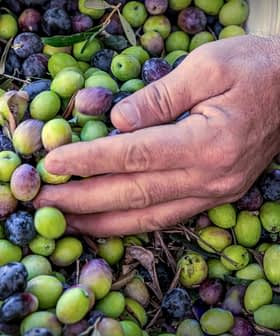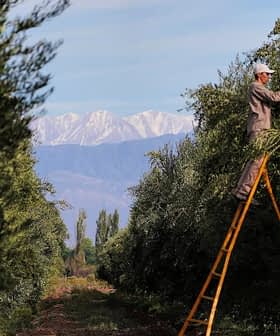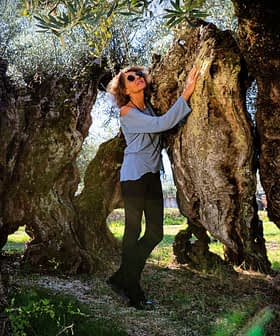Kern County Producer Reflects on The California Olive Oil Industry
Stefanie Wickensheimer explains how Rio Bravo Ranch crafts high-quality extra virgin olive oil in the southern San Joaquin Valley.
 The central California producer earned two Gold Awards and a Silver Award at the 2024 NYIOOC World Olive Oil Competition. (Photo: Rio Bravo Ranch)
The central California producer earned two Gold Awards and a Silver Award at the 2024 NYIOOC World Olive Oil Competition. (Photo: Rio Bravo Ranch) Rio Bravo Ranch, a family-owned agricultural operation in Kern County, has been farming for seven generations and now focuses on producing high-quality olive oil. The ranch has won awards for its olive oil at the NYIOOC World Olive Oil Competition and is adapting to rising production costs by increasing prices, which has not affected demand. The company sells its olive oil online, at local markets, and to private labels, with flavored olive oils serving as a gateway for new consumers to explore the category.
From cattle to olives, the family behind Rio Bravo Ranch has been a fixture of Kern County agriculture for the past seven generations.
The ranch sprawls over 3,200 hectares outside Bakersfield, about 165 kilometers north of Los Angeles, with 18.5 hectares of certified organic olive groves.
I think we are starting to see more customers prioritizing their health and looking at the products they consume.
“[The Nickel family’s] ties to agriculture started seven generations ago with Henry Miller, known as ‘The Cattle King,’ which is who our Miller’s Reserve Blend was named after,” said Stefanie Wickensheimer, the executive assistant and project director at Rio Bravo Ranch.
“Today, the Nickel family farms tomatoes, corn, cotton, almonds, melons, citrus and olives,” she added. “The significance and reason behind planting olives for oil production was to produce and package a product with the company’s name on it. It is the only crop we control from the field to the end user.”
See Also:Producer ProfilesThe olives, mostly Picual, Coratina and Frantoio, with small quantities of Pendolino, Ascolana, Nocellara del Belice and Maurino, were planted in 2010, with the first harvest in 2015. From the outset, the company decided to pursue quality over quantity.
This approach has been validated at the NYIOOC World Olive Oil Competition, the world’s largest olive oil quality contest. Over the past two years, Rio Bravo Ranch has been awarded for each of its three extra virgin olive oil brands: a monovarietal Picual and Coratina and the Miller’s Reserve Blend comprising both varieties.
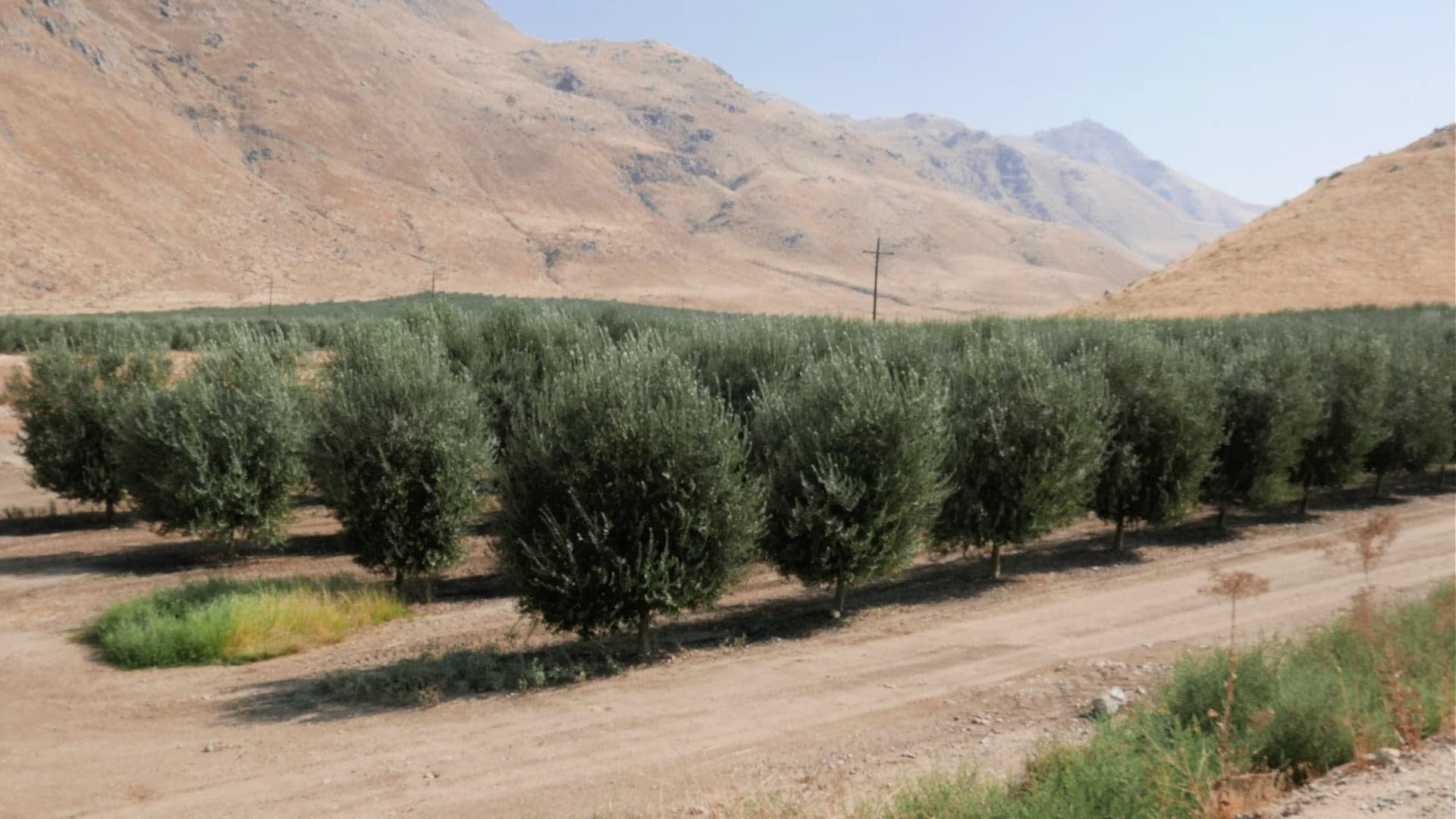
The company’s 18.5 hectares of organic olive groves are in the southern San Joaquin Valley. (Photo: Rio Bravo Ranch)
“What we aim for every year is creating a high-quality product, and winning those awards shows that we are continuing to do that year after year,” Wickensheimer said.
Along with controlling each step of the production process, the company achieves its quality goals by starting the harvest in mid-October.
“That tends to be the sweet spot,” Wickensheimer said. “Not all of the olives have matured at that point, but we would rather harvest olives on the greener side than too ripe. We opt for higher quality and higher polyphenol olive oil.”
Testing done at the end of summer and the beginning of autumn determines the exact date of the harvest. “It’s not perfect, but we pick a date, stick with it, and we’re okay if our yield isn’t as high as long as we have the quality,” Wickensheimer said.
The timing of the harvest, which lasts from one to two weeks, usually coincides with the end of the pistachio harvest, so Rio Bravo Ranch contracts the same company to do both and avoids the problem of finding workers.
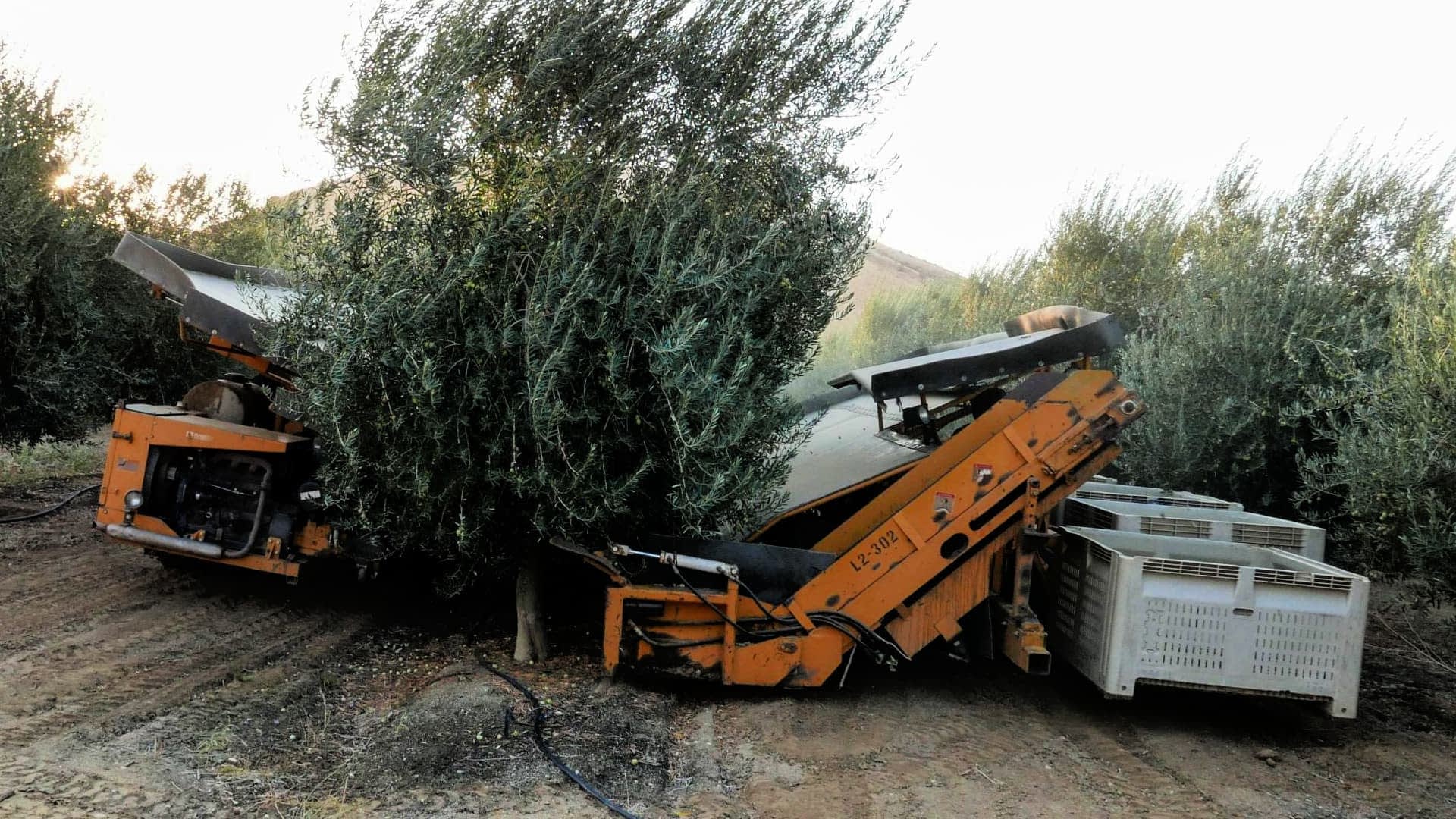
Rio Bravo Ranch starts its olive harvest in mid-October, usually right after the pistachio harvest is completed. (Photo: Rio Bravo Ranch)
“Since we mechanically harvest with a pistachio shaker, harvest is never perfect,” Wickensheimer said. “We can only do the best we can and shake as much crop off the trees as possible. That being said, we didn’t run into too many issues during harvest.”
Rio Bravo Ranch does not have a dedicated mill; it has hired a mobile mill to come to the groves since 2016.
Wickensheimer said this helps Rio Bravo Ranch overcome the most significant challenge they face most years – high temperatures – by allowing them to coordinate with the pickers how many bins to harvest each morning before the mill arrives.
She added that the mobile mill provides plenty of advantages. “It cuts down the hauling fees,” she said, eliminating waiting times between the harvest and the transformation of the olives into olive oil.
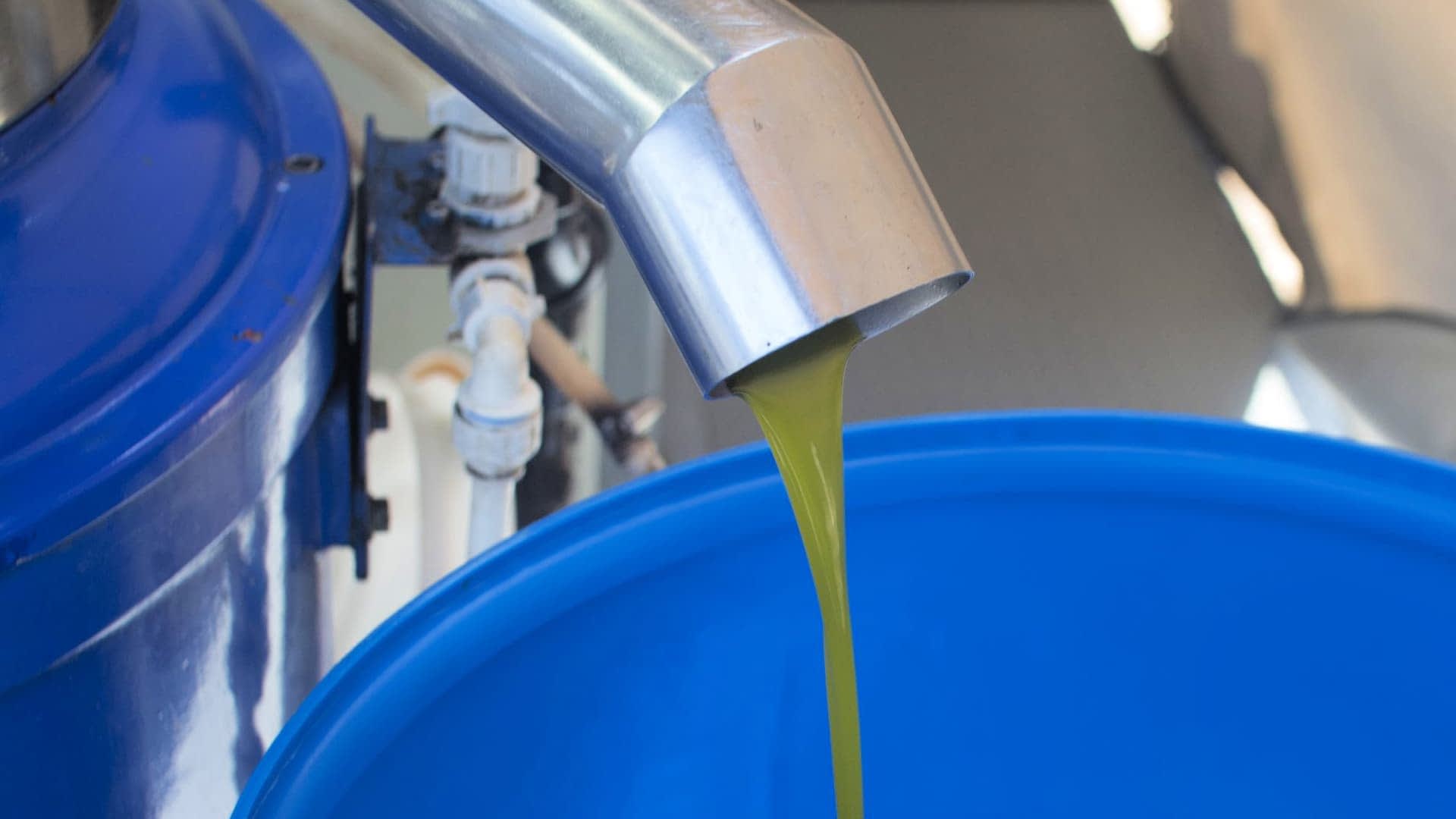
Rio Bravo Ranch contracts with a mobile mill, lowering costs to transport the olives and decreasing the time between harvest and transformation. (Photo: Rio Bravo Ranch)
“The biggest challenge we have to deal with throughout the year is the heat,” Wickensheimer said. “We have to keep an eye on irrigation.”
While the area has enjoyed some wet hydrological years (from July to June), Wickensheimer said the company irrigates its olives from a dedicated reservoir at specific moments to maximize quality.
“There are times when you have to irrigate more,” she said and other times when Rio Bravo Ranch stops irrigating to stress the trees a bit. “When you stress the trees in the summer, you must watch them to ensure they are not overstressed,” Wickensheimer added.
Along with the challenges, the high temperatures also provide some advantages. “We don’t have a lot of issues with the olive fruit fly,” Wickensheimer said. “They don’t seem to do well in the high temperatures. That’s one advantage of having the heat.”
So far, the situation in the olive grove is looking good for the 2024/25 crop year. “The trees are looking good,” she said. “The trees were in full bloom a month ago and have fruit budding already… but it’s still a little early to see how much crop we’re actually going to get.”
See Also:Rio Bravo Ranch Win 3 Awards at 2024 NYIOOCNow, the company is hoping for some consistent temperatures throughout the summer, followed by cooler weather in September, to maximize their yield.
Once the olive oil is produced in the mill, it is packaged in larger drums or SpaceKraft cardboard totes, similar to bag-in-box containers, depending on the quantity. These are stored in a refrigerated building behind the office.
“What we like about those is the liners are vacuum sealed, where they go down with the oil and don’t allow a whole lot of oxygen to get in, which is great,” Wickensheimer said.
Another advantage is that they can be shipped to customers easily since they are square and relatively lightweight.
Rio Bravo Ranch sells its olive oil mostly online, at some local farmers markets and artisanal food stores in Bakersfield. It also provides olive oil for the private labels of a local restaurant and San Francisco-based food shop.

Rio Bravo Ranch produces Picual and Coratina monovarietals and a blend. (Photo: Rio Bravo Ranch)
Wickensheimer, who keeps a close eye on California extra virgin olive oil prices, said this market segment has been largely unaffected by historically high prices at origin in Spain and the rest of Europe.
“Even with the higher prices in Europe, it’s still cheaper than what California olive oil is going for,” she said.
Wickensheimer attributed higher prices in California to increased production costs. “We’re seeing a rapid increase in the cost of farming,” she said. “That’s just how it is right now. It’s unfortunate, but we have to raise our prices a little bit to cover those increases.”
Despite having to raise prices, Wickensheimer has not seen much of an impact on demand.
“I think we are starting to see more customers prioritizing their health and looking at the products they consume,” she said. “Because of this, we haven’t seen a drop in sales even when we have to increase our prices slightly to keep up with our higher costs.”
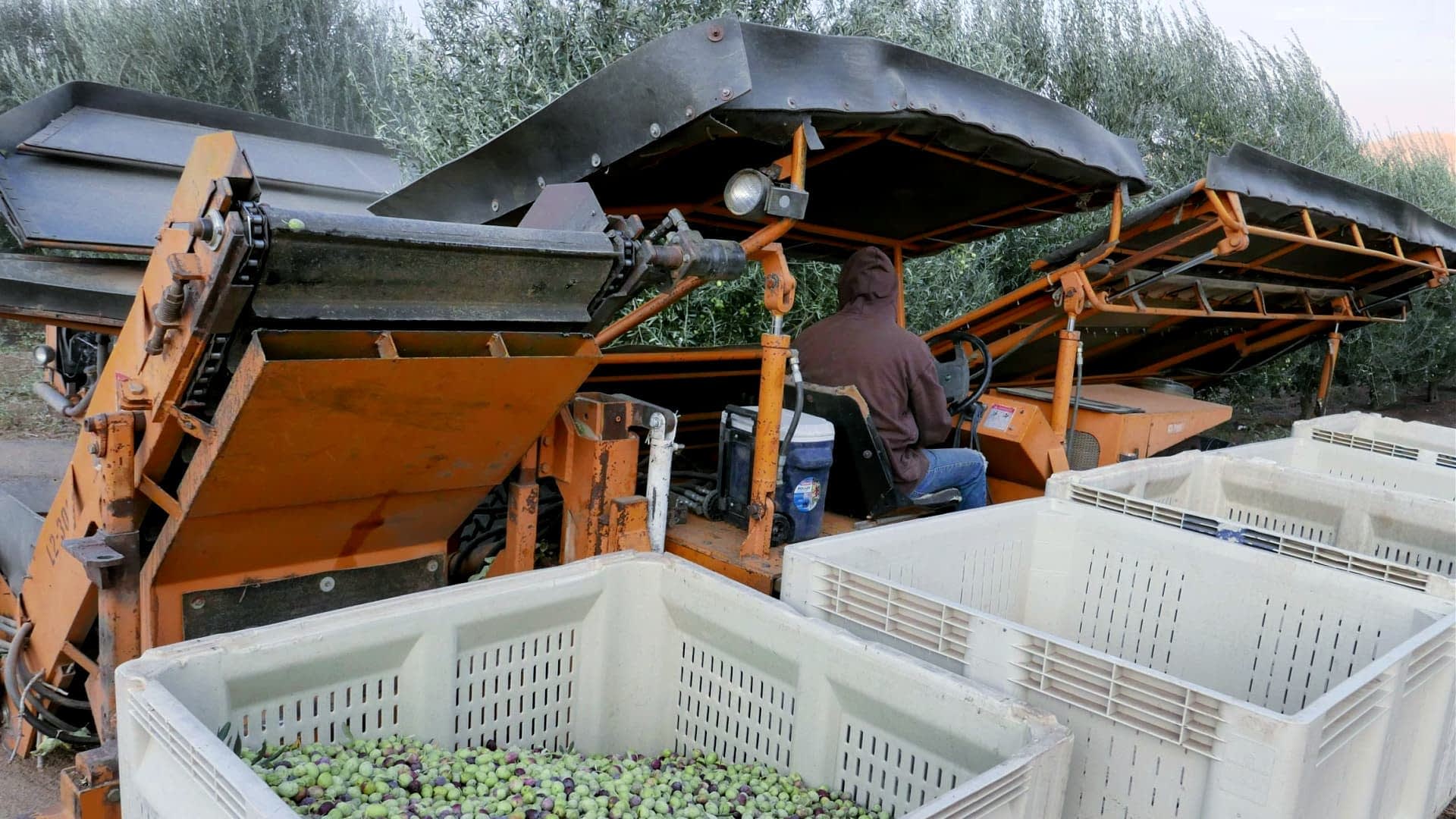
So far, the company anticipates another good harvest in the 2024/25 crop year but said it is still too early to tell how much fruit will be produced. (Photo: Rio Bravo Ranch)
“We have seen more interest in our gallon (3.8 liters) option, which can be the most economical option based on usage,” Wickensheimer added.
Another consumption trend Wickensheimer has seen over the years is the role of flavored olive oils as a gateway into the border category for new consumers.
“When people start to get their foot in the door, they tend to start with infused olive oils and work their way up to using plain extra virgin olive oil,” she said.
Wickensheimer added that not everyone wants to drink a spoonful of extra virgin olive oil to experience its flavors.
“Some people turn their noses up when trying it with bread,” she said. “But having the infused olive oil has definitely helped because people are more willing to try it if it’s a flavor they like.”
“It’s a way for them to start to incorporate olive oil into their diet because many people don’t realize that whatever you use butter or vegetable oil for, you can pretty much use olive oil for,” Wickensheimer concluded.
Share this article



